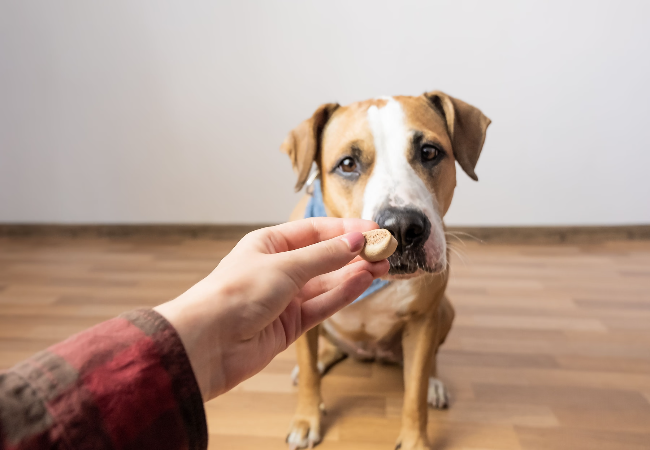Vet Approved Guide: Understanding Timid Behaviors in Dogs—Are They Normal? 2025 🐶🐾

In this article
Vet Approved Guide: Understanding Timid Behaviors in Dogs—Are They Normal? 2025 🐶🐾
By Dr. Duncan Houston BVSc
Just like humans, dogs have unique personalities. Some are outgoing and adventurous, while others are more reserved or shy. If your dog exhibits timid behaviors, you might wonder if this is normal or a cause for concern. Let's explore the reasons behind canine timidity and how to support your dog's emotional well-being. 🛡️
🔍 What Does Timid Behavior Look Like in Dogs?
Timid or shy dogs may display a range of behaviors that indicate discomfort or fear:
- Cowering or hiding when approached
- Avoiding eye contact or turning their head away
- Tucked tail and lowered body posture
- Flattened ears and lip licking
- Whining or trembling in new situations
- Reluctance to engage with unfamiliar people or animals
These behaviors are often signs that your dog is feeling anxious or overwhelmed.
🧬 Causes of Timid Behavior in Dogs
Several factors can contribute to a dog's shyness:
1. Genetics
Some dogs are naturally more reserved due to their genetic makeup. Breeds like the Anatolian Shepherd or Akita are known for their independent and cautious nature.
2. Lack of Early Socialization
Puppies have a critical socialization period between 3 to 14 weeks of age. Limited exposure to various people, environments, and experiences during this time can lead to fearfulness later in life.
3. Traumatic Experiences
Negative experiences, such as abuse or frightening encounters, can cause dogs to become wary and timid. These experiences may lead to long-lasting behavioral changes.
4. Health Issues
Underlying medical conditions, including pain or neurological disorders, can manifest as behavioral changes. It's essential to consult a veterinarian to rule out health problems.
🛠️ Strategies to Build Confidence in Timid Dogs
Helping your dog overcome timidity involves patience and positive reinforcement:
1. Create a Safe Environment
Ensure your dog has a designated safe space where they can retreat when feeling overwhelmed. This could be a quiet room or a cozy crate.
2. Gradual Exposure
Introduce your dog to new experiences slowly. For example, if your dog is afraid of strangers, start by having a friend sit quietly in the same room without direct interaction. Gradually increase exposure as your dog becomes more comfortable.
3. Positive Reinforcement
Reward your dog with treats and praise when they display confident behavior. This encourages them to repeat those actions.
4. Consistent Routine
Maintaining a consistent daily routine can provide a sense of security for your dog, reducing anxiety and building confidence.
5. Professional Help
If your dog's timidity is severe or doesn't improve, consider consulting a professional dog trainer or behaviorist for personalized guidance.
📱 Enhance Your Dog's Well-being with These Tools
Consider leveraging these resources to support your dog's health and behavior:
- Ask A Vet: Access 24/7 veterinary advice for any concerns regarding your dog's health. 🩺
🎯 Final Thoughts
Timid behavior in dogs is not uncommon and can stem from various factors, including genetics, past experiences, and lack of socialization. With understanding, patience, and appropriate strategies, you can help your dog build confidence and enjoy a more fulfilling life. 🐾
For personalized advice and support, download the Ask A Vet app today. 📲🐶






